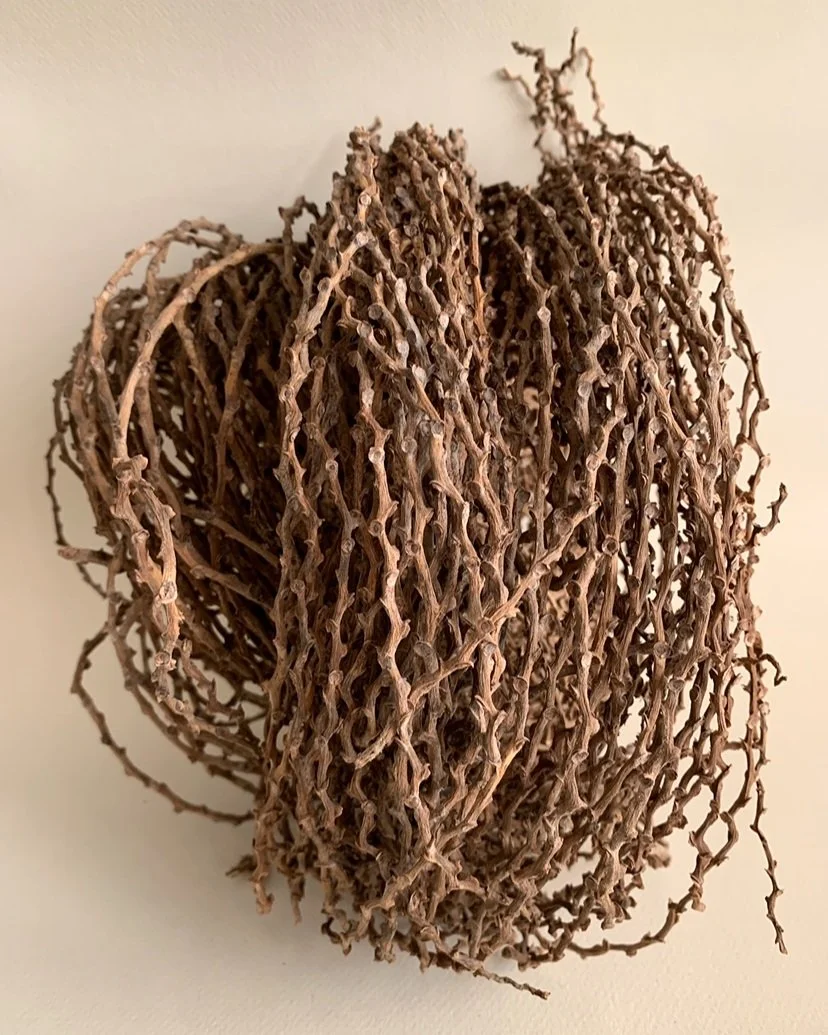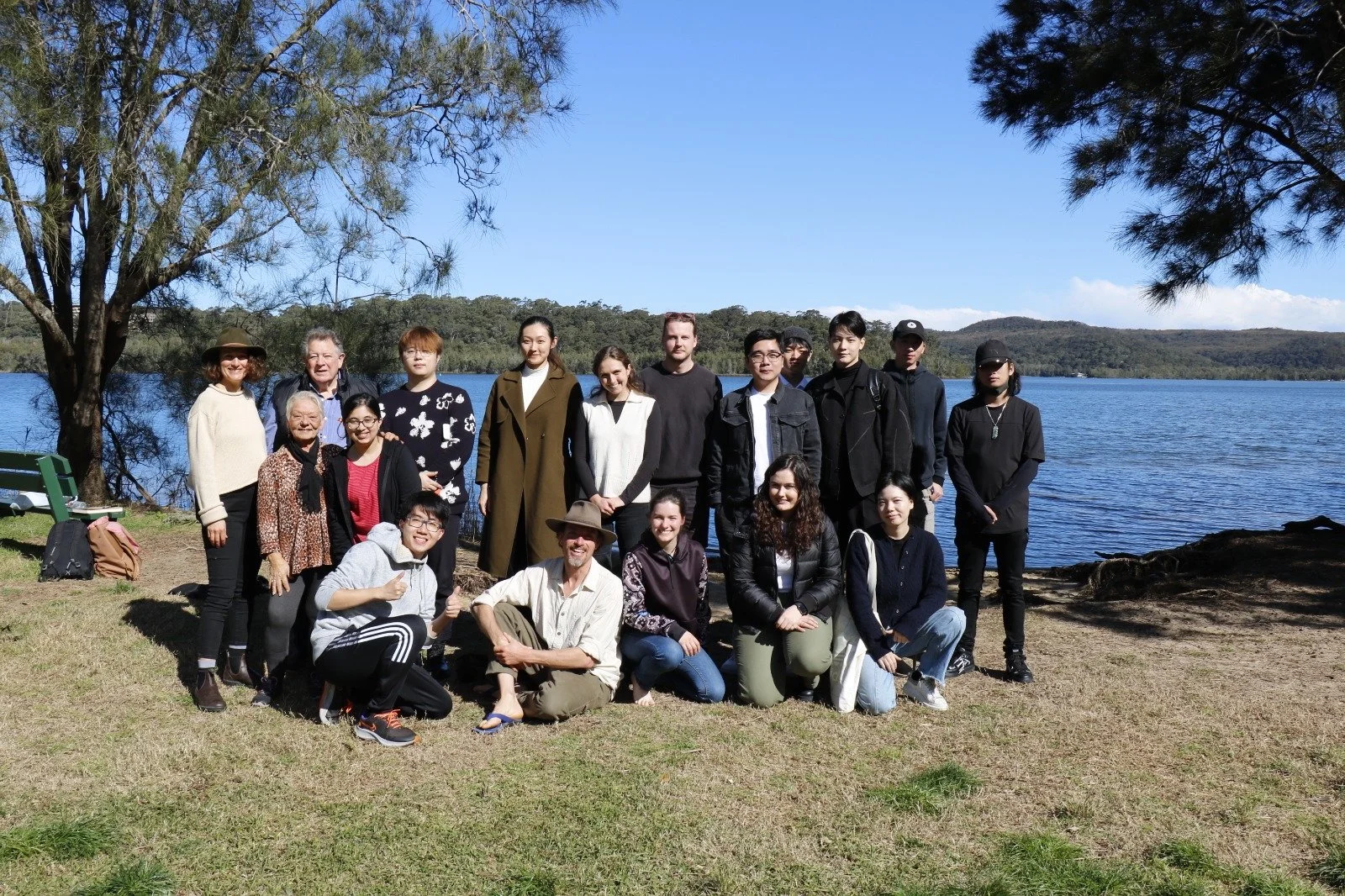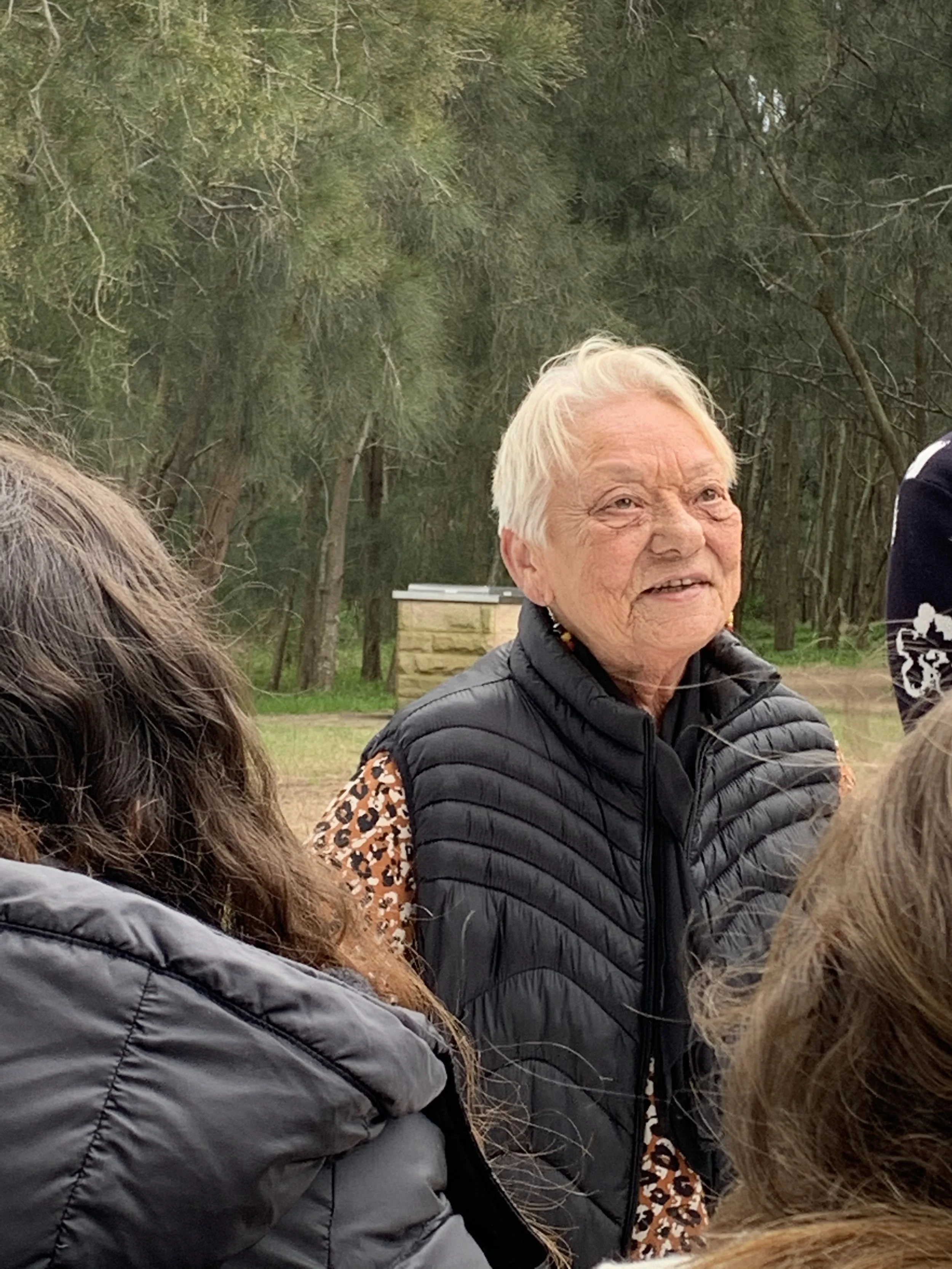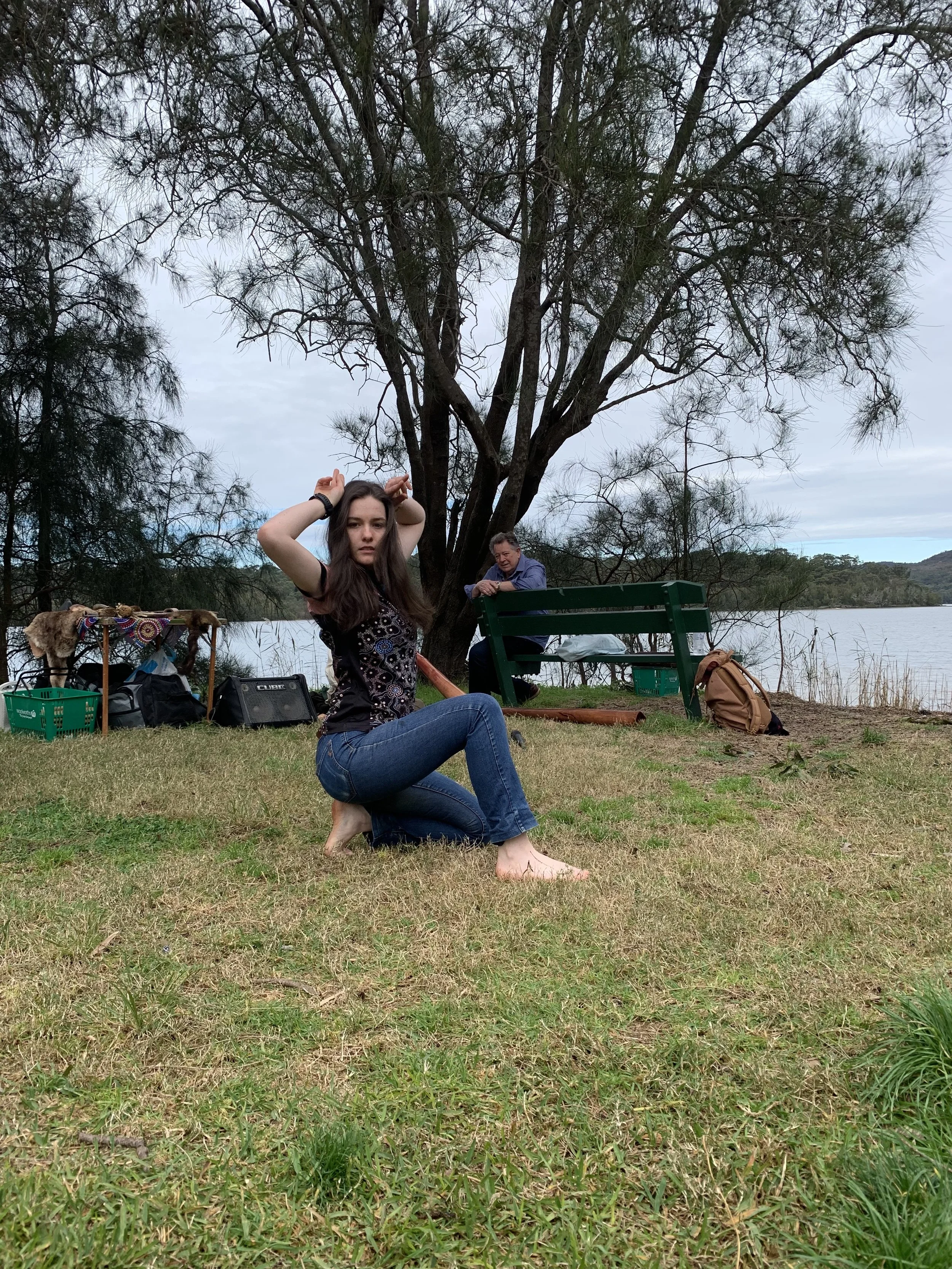REGENERATIVE FUTURES
GARIGAL Country
2022
With sincere gratitude to co-envisioners:
Architecture as Visionary and wishing to cultivate regenerative education centres and places for education, responding to the void of Indigenous presence and dedicated and purpose built cultural space on the Northern Beaches, Sydney. Advocating for a Cultural Centre through co-envisioning and bringing community together.
Aunty Clair Jackson
Ugarapul Clan Jagara Nation
My involvement in this project has been as one of three Aboriginal advisors to this exhibiting group of Sydney University Master of Architecture students. The group of 16 is a mix of Anglo-Australians and International students.
Their task has been to design an Aboriginal Cultural Centre at Bilarong Reserve on Narrabeen Lake.
Visits were made to the Bilarong site and to Northern Beaches surrounds: to observe rock carvings and an eco building at West Head, middens at McCarr’s/Wirreanda Creek, Aboriginal sculptures by Narrabeen Lake and close observation of coastal bushland.
Comprehension of another culture requires many years. I commend the students for their interest, energy and research. And for their courage in publicly exhibiting their architectural concepts outside the university context. It has been my pleasure to meet them and follow their journey.
Aleta Wassell
Co-envisioning this brief alongside some influential and talented leaders has been a pleasure. The powerful discussions, perspectives on regenerative futures and truth-telling, and final works produced for this brief are something beyond just architecture. It is looking beyond personal experiences, beyond just sharing historical facts, and beyond just designing for an identified purpose. At its core, this studio has embodied architecture in collaboration to honour healing spaces that secure regenerative futures for Aboriginal and Torres Strait Islander peoples.
I was first introduced to this project through an invitation to perform a contemporary Indigenous song and dance and provide insight into the local Aboriginal youth of the Northern Beaches area. I felt honoured to be provided the opportunity to share my perspective and experiences regarding the issues we have faced in our local community to secure low-cost spaces for meetings, community events, and Aboriginal and Torres Strait Islander youth groups. Those initial conversations after my performance and speech at that site visit are when I began to dive deeper into the layers of the brief and came to appreciate how complex and personal this studio is.
I quickly jumped on board with the students’ journeys, volunteering my time to visit the studio, answer messages, and share resources to support deep conversations and consideration for the multifaceted aspects of community, healing, truth-telling, and regenerative futures. I became invested in the powerful learning this brief provided as I witnessed perspectives shift to reflect inclusive design ideas that showcase wholistic understandings of the unique, contemporary cultural practices of Aboriginal and Torres Strait Islander peoples living on the Northern Beaches. I was also a juror at two of the students’ progress presentations which allowed me to further provide feedback and work with the students to develop their ideas into complex architectural designs that meet the diverse needs of the Northern Beaches Aboriginal community.
Throughout the journey from my first discussions at Billabong Reserve to the final studio exhibition, I have been so grateful to have Catherine’s support in assisting students in questioning colonised and western approaches to design and architecture. The personal journey I have taken while co-envisioning the project has been eye-opening and healing as I have engaged with many successful architects who have learnt to deeply reflect on cultural perspectives, histories, and pathways for regenerative futures.
I would like to thank all participants in this studio. You have deeply explored your individual perspectives and approaches to architecture and have travelled a personal journey to understanding truth-telling, regeneration, and learning about historical complexities for Aboriginal people on the Northern Beaches. Your commitment to embracing new perspectives and designing works that invite conversations about contemporary Indigenous culture, reconciliation, and truth-telling is to be commended.
Each one of the projects in this studio has developed throughout the design process and has been carefully dissected and re-designed on multiple occasions after reflection and consideration of western perspectives and stereotypes of Aboriginal culture in Australia. As a young Aboriginal woman living on the Northern Beaches, it is so fulfilling to see the participants in this studio question and re-question their thought processes to produce final designs. I am proud to see that each project represents the local Aboriginal culture on the Northern Beaches and its complex forms that result from the intergenerational impacts of a damaging colonial history.
PROJECTS
-
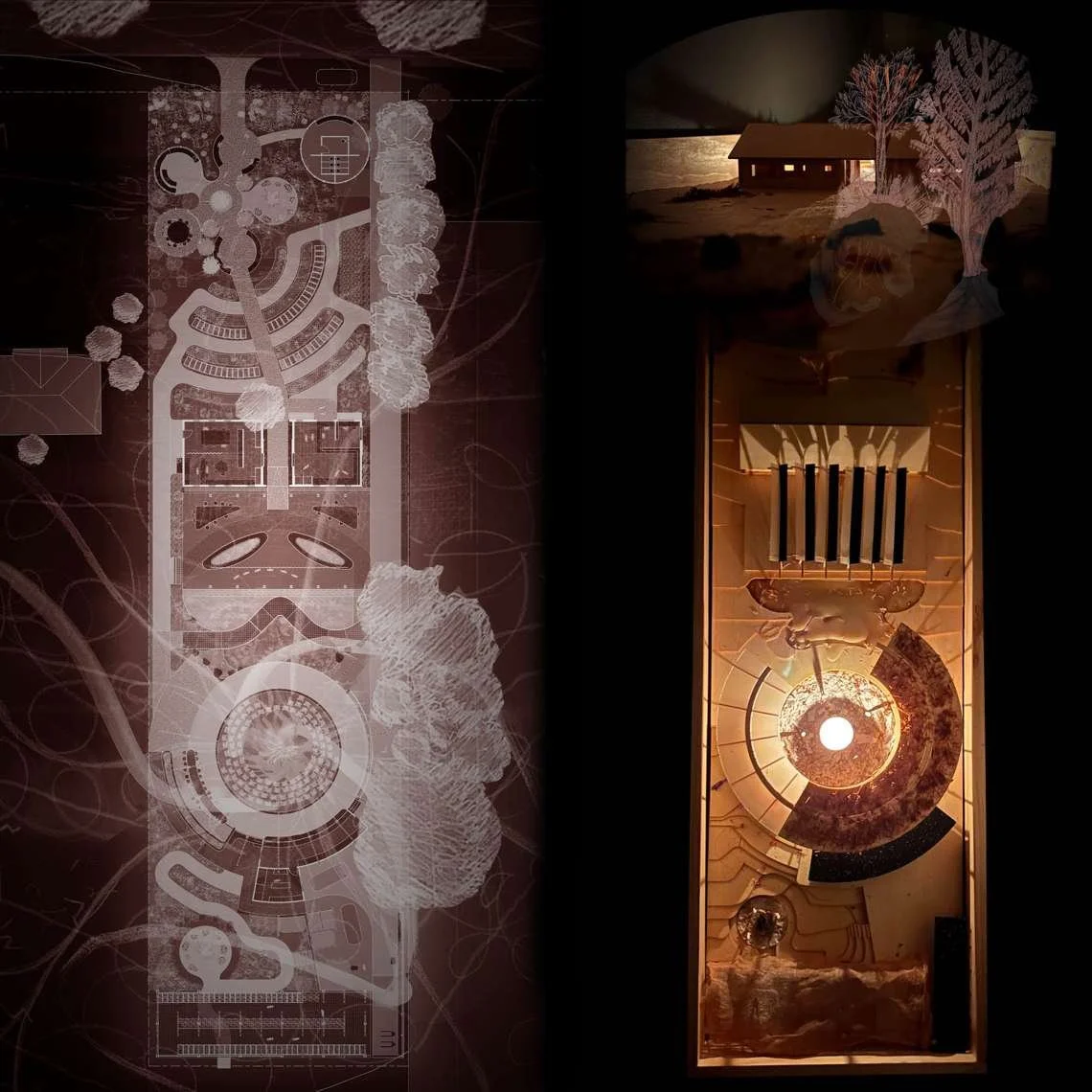
Buduwa, Wugul, Guwiyang, Warm one’s hand by the fire and then squeeze gently the fingers of another person, One Fire camille symonds
“Now two river run their course separated for so long, I’m dreaming of a brighter day when the water will be one” (Treaty, Youth Yindi) written in 1991 this sentiment continues to resonates. We are on Country everyday however working in the built environment we largely operate within a system forced upon this land. The project aims to foster individuals inner fire through creating spaces to gather around fire. Allowing one’s eyes to adjust and tune out the noise of the world space is created for genuine human connection and connection to Country to be formed.
-
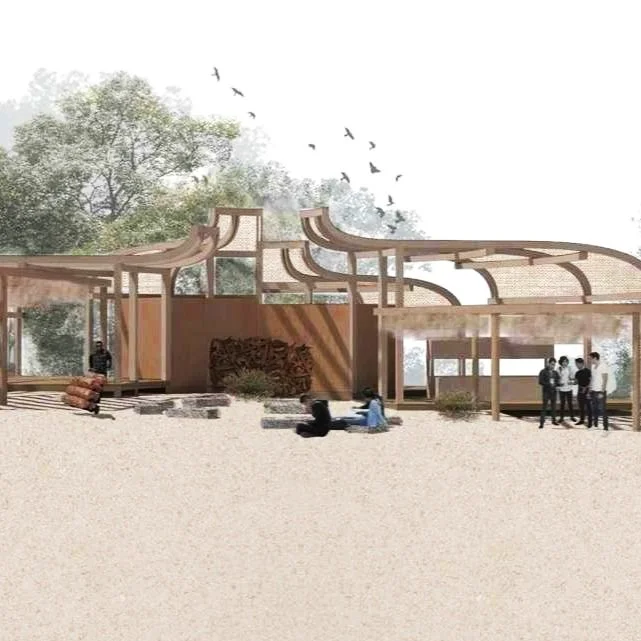
Whisper of Leaves Lisa Zhuang
Upon the enduring land where Aboriginal people have thrived for millennia, the aftermath of colonization demands a profound regeneration—of both physical vitality and mental well-being. This thesis endeavors to meticulously reevaluate and amplify the essence of Aboriginal culture from a biological perspective, aiming to instigate a comprehensive rejuvenation within Indigenous communities. Metaphorically, leaves emerge as a symbol of regeneration, akin to a window or eye offering insight into pathways for future development. By intertwining cultural revival with biological insights, this holistic approach charts a course toward a resilient and thriving Indigenous community, harnessing the regenerative potential embedded within their rich heritage.
-
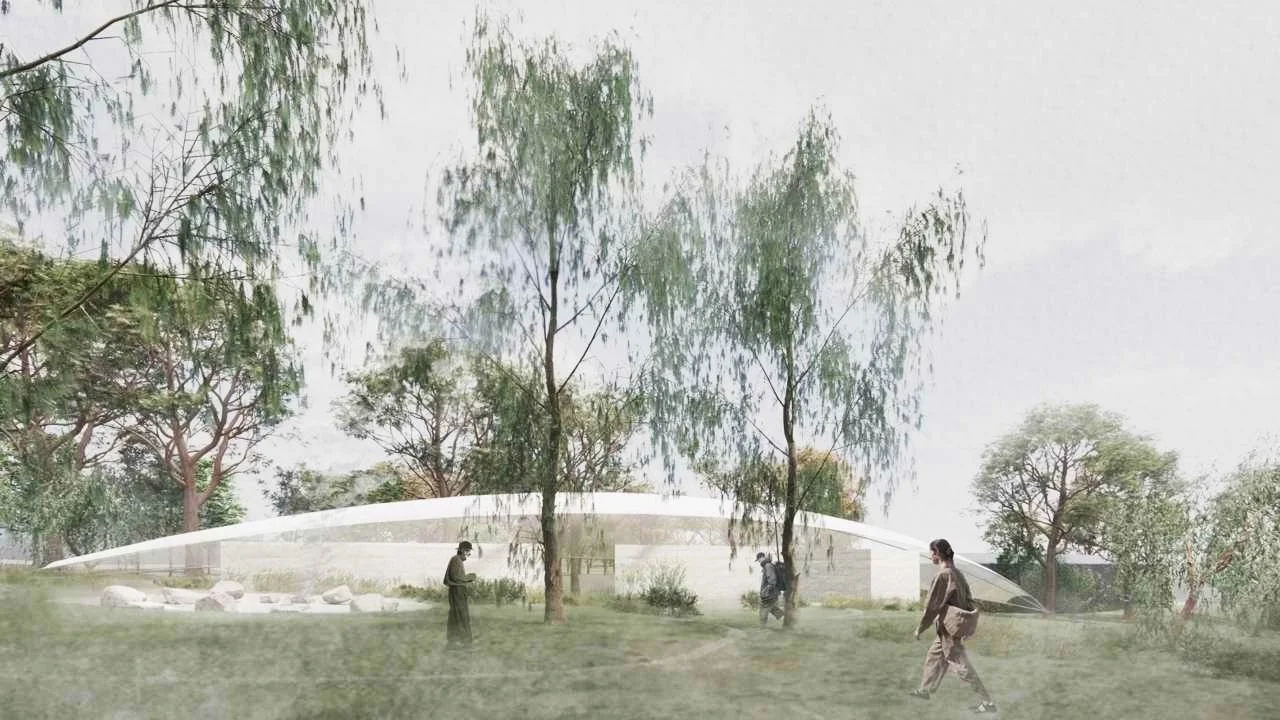
Meandering the Interstitial Samantha Hayim
In response to the mission of Bush-to-Bowl and through a process of deep listening and co-authorship with Country, a proposal titled ‘Meandering the Interstitial’ was developed, with the aim of creating space for cultural exchange, haptic learning, and connection. The architecture evolved through leaning into my own intuitive connection with Country’s natural textures and a fascination with human movement and gesture which I wanted to amplify through my design. Throughout this thesis have learned that Indigenous culture thrives through making, sensory embodiment and a profound connection to the land, offering a valuable insight into the potential for a sustainable approach to design, learning and living in today's world.
